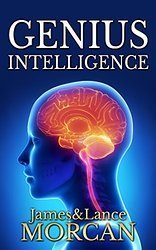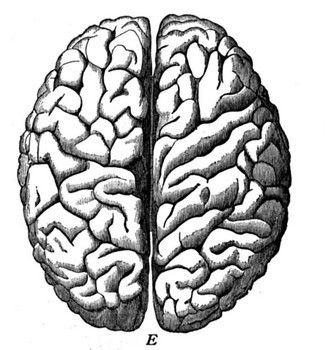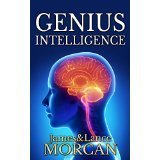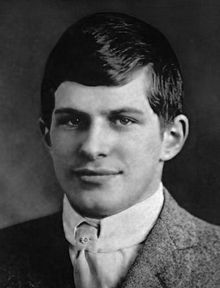Lance Morcan's Blog, page 73
December 31, 2014
Meet the polyglots…fictional and real
In our thriller series The Orphan Trilogy our (fictitious) Pedemont orphans all speak a large number of languages and are therefore polyglots. Although we never actually specify how many, it’s implied that each orphan can speak dozens of languages.

They also have the ability to learn new ones quickly, and more than once we show our orphans, or orphan-operatives, completely mastering languages in the days leading up to a new mission.
While this may seem far-fetched, there have been persistent reports of CIA agents mastering languages within one week. If true, this is most likely a direct result of classified learning techniques or brain technologies not available to the general public.
Besides speculation on secret language techniques and suppressed technologies in the world of espionage, is speed learning languages really possible? We explore this in our new release book GENIUS INTELLIGENCE: Secret Techniques and Technologies to Increase IQ.
Here’s an excerpt from the book:
In 2004, British autistic savant Daniel Tammet shocked Icelandic peoples when he appeared on live television to demonstrate his almost-overnight mastery of their notoriously complex language. Tammet spoke fluent Icelandic, having only studied the language for seven days.

Autistic savant Daniel Tammet…shocked Icelandic peoples.
Besides savants like Tammet and others born with rare genetic gifts that allow for such rapid memorization skills, is polyglotism, or the ability to master multiple languages, achievable for the average person?
Yes.
Notable polyglots throughout history include the following (with numbers in brackets corresponding to the amount of languages they spoke fluently): Cleopatra (9), Mithridates VI of Pontus (22), John Milton (11), Noah Webster (23), Arthur Rimbaud (10+), Giuseppe Caspar Mezzofanti (39), Friedrich Engels (20+), Nikola Tesla (8), José Rizal (22), Harold Williams (58), Mahapandit Rahul Sankrityayan (36) and Kenneth L. Hale (50).

Memory is obviously a major part of mastering languages quickly. Perhaps one Joshua Foer, a former journalist who became a mnemonist – someone with the ability to recall unusually long lists of data – has some answers for those desiring to be polyglots.
Foer authored the bestselling book Moonwalking With Einstein: The Art and Science of Remembering Everything, which chronicles his journey to becoming a memory expert. The book also describes how after only one year of training he was able to become USA Memory Champion.
“Memory is like a spiderweb that catches new information,” Foer writes in Moonwalking with Einstein. “The more it catches, the bigger it grows. And the bigger it grows, the more it catches.”
Irishman Benny Lewis is a contemporary polyglot who speaks 12 languages fluently. Lewis, who taught himself Dutch in only six weeks and proved it by recording a video of himself being interviewed in Dutch, runs a website devoted to teaching others how to speed-learn languages.
The self-confessed “mediocre student” has also published a book titled Fluent in 3 Months: How Anyone at Any Age Can Learn to Speak Any Language from Anywhere in the World, which has received excellent reviews.
“The book is everything I’ve learned in 11 years of full-time language learning,” Lewis told UK news site Metro in an article dated March 13, 2014. “It’s all the changes in mentality and, of course, the techniques, because there are plenty of tricks to mastering a language from scratch.
“Language books are generally written by people with PhDs in linguistics or born into multilingual environments and I didn’t see anything that was relatable. I did poorly in school – barely passed German – and felt people would relate to that.”
Some of Lewis’ simple language learning techniques include: speaking the language from day one rather than studying text books; listening for specific words or segments you recognize rather than entire sentences; making vivid mental associations in order to remember certain words.
Bulgarian educator and psychiatrist Dr. Georgi Lozanov (1926-2012) created an education system known as Suggestopedia, which is primarily used for speed learning languages.
Although Baroque and classical music is extensively used in the curriculum, Suggestopedia (also sometimes called Suggestopædia) involves a lot more than just listening to specific compositions. Essentially, the controversial and unproven learning method incorporates a combination of passive and active learning. It also employs various arts – including singing, music, drama and paintings – to put the mind in the most suggestive state for learning.
Admittedly, Dr. Lazanov’s education system is not a conclusive method for speed learning foreign languages and has been written off as mere pseudoscience by some researchers. However, a report on Suggestopedia by the United Nations Educational, Scientific and Cultural Organization (UNESCO) makes for interesting reading.
Compiled by UNESCO education experts at a meeting in Sofia, Bulgaria in 1978, the report concludes: “There is consensus that Suggestopedia is a generally superior teaching method for many subjects and for many types of students, compared with traditional methods. We have arrived at this consensus following a study of the research literature, listening to the testimony of international experts, observing films portraying Suggestopedia instruction and visiting classes in which Suggestopedia is practiced.”
Dr. Lazanov claimed throughout his career that foreign languages could be mastered in a tenth of the usual time by following his methods.
From the numerous examples listed in this chapter, it should be clear that learning multiple languages in rapid time is possible. And, unlike naturally-gifted savants such as Daniel Tammet, it should also be noted that Benny Lewis and many other historical and modern polyglots are essentially savants-by-training.
Therefore, it does indeed appear possible for the layman to acquire the necessary skills to become a polyglot.
To read more about polyglots and savants check out GENIUS INTELLIGENCE: Secret Techniques and Technologies to Increase IQ: http://www.amazon.com/GENIUS-INTELLIGENCE-Techniques-Technologies-Underground-ebook/dp/B00QXQQWXO/

To view the discussion thread on genius intelligence (the phenomenon) in our ‘Underground Knowledge’ group on Goodreads check out: https://www.goodreads.com/group/show/142309-29-conspiracy-theories—a-discussion-group >>> Everyone’s welcome!
*************************************

December 30, 2014
Brain gland activation may hold key to using more of our brain
Studies have shown that all individuals have a certain amount of dormant or underdeveloped brain areas. (Every human brain ever mapped scientifically has shown at least some inactive cells and neurons). This area of neuroscience, especially concerning little known brain glands, may hold the answer as to why we only use such a small percentage of our brains.

We explore the intriguing phenomenon that is brain gland activation in our new release bestseller GENIUS INTELLIGENCE: Secret Techniques and Technologies to Increase IQ. An excerpt from this book follows…
Important and often dormant, semi-dormant or underutilized brain glands include fairly well known ones like the pineal gland. This powerful gland, which has been known about since ancient times, is said to be well developed in most persons of high intellect and produces the serotonin-derived hormone melatonin.
Less reported glands and interrelated areas of the brain include the pituitary (nicknamed the body’s master gland), which controls most other hormone-secreting glands, the thalamus (necessary for planning and decision-making), the amygdala, which can bypass thought and instantly react, the hippocampus (one of the only areas of the brain where neurogenesis or the birthing of new neurons can occur) and the hypothalamus (crucial for memory and learning).
In our international thriller series The Orphan Trilogy, we show how all these parts of the brain can be stimulated into activity in a variety of ways, including magnetism.
As we wrote in book two in the trilogy: “Rare earth magnets were embedded inside each helmet for the purpose of activating certain brain glands. Glands that were dormant in the average person.”
Neuromagnetic helmets and similar brain stimulation technologies are not just confined to the realms of fiction.

A neuromagnetic signal generator.
Transcranial direct current stimulation, or TDCS, is one type of brain stimulation technique used in the real world. It’s carried out by applying a helmet or cap to the individual’s head. TDCS targets specific parts of the brain with low voltage electrical currents. This allows for the alteration of electrical states of neurons in targeted areas of the brain.
TDCS is in its infancy, but early studies have shown it enhances motor skills, memory recall and concentration. As a result, the US military now employs TDCS to assist fighter pilots, snipers and other personnel.
In a BBC news article dated July 22, 2014, TDCS is explored in relation to making sleep-learning possible. “In the near future, technology may offer further ways of upgrading the brain’s sleep cycles. Memory consolidation is thought to occur during specific, slow, oscillations of electrical activity, so the idea here is to subtly encourage those brain waves without waking the subject.
“Jan Born, at the University of Tubingen,” the article continues, “has been at the forefront of these experiments. In 2004, he found that he could help amplify those signals using transcranial direct current stimulation (tDCS), which passes a small electric current across the skull, successfully improving his subjects’ performance on a verbal memory test.”
In 2013, several TDCS inventions became commercially available to the public for the first time.
Leading UK newspaper The Guardian ran an article on February 5, 2014 under the heading Can an electronic headset make you a better video gamer? The article mentions a specific device that “uses the principles of tDCS – transcranial direct current stimulation – sending a small current of between 0.8 and 2.0mA through the prefrontal cortex through electrodes positioned on your forehead.”
Although the technology is still being refined, many video gamers all over the world are reporting increased mental concentration and better performance. This bodes well for other types of mental exercises – like academic study for example – especially as the TDCS devices become more honed.
Transcranial magnetic stimulation, or TMS, is a similar non-invasive brain enhancement technology except it uses magnets instead of electricity. TMS’s magnetic fields are capable of altering neurons in targeted areas of the brain.

TMS in action.
Neuromagnetic helmets and similar devices have been nicknamed ‘zap caps’ and preliminary studies show they have the potential to improve brain function in numerous ways.
Another article that ran in The Guardian nicely summarized a recent scientific study that proves TMS’s positive influences on the brain. The August 2014 article states that “memory can be boosted by using a magnetic field to stimulate part of the brain, a study has shown. The effect lasts at least 24 hours after the stimulation is given, improving the ability of volunteers to remember words linked to photos of faces.”
The Guardian article quotes Dr Joel Voss, from Northwestern University, in Chicago, as saying: “We show for the first time that you can specifically change memory functions of the brain in adults without surgery or drugs, which have not proven effective. This non-invasive stimulation improves the ability to learn new things.”

TMS technologies stimulate the brain.
The latest studies also show that TMS can specifically stimulate the hippocampus, which oversees and directs the entire brain including crucial glands. Formerly it was believed the hippocampus was too deeply embedded in the brain to be stimulated by TMS. However, scientists have recently discovered the hippocampus can be stimulated indirectly via connected brain structures within the reach of TMS’s magnetic fields.
Another potential method of increasing activity in specific brain glands like the pituitary is by ingesting an unusual substance called Ormus. (See Chapter 11 for more on Ormus).
To read more about brain gland activation check out GENIUS INTELLIGENCE: Secret Techniques and Technologies to Increase IQ: http://www.amazon.com/GENIUS-INTELLIGENCE-Techniques-Technologies-Underground-ebook/dp/B00QXQQWXO/

To view the discussion thread on genius intelligence (the phenomenon) in our ‘Underground Knowledge’ group on Goodreads check out: https://www.goodreads.com/group/show/142309-29-conspiracy-theories—a-discussion-group >>> Everyone’s welcome!
*************************************

December 29, 2014
Sleep-learning may not be limited to the world of fiction
In academic circles, it’s fair to say the debate continues over the effectiveness, or otherwise, of hypnopædia, or sleep-learning. And although still not conclusive, some research has shown the subconscious mind is very receptive to absorbing knowledge whilst we sleep. ( Hypnopædia , incidentally, comes from the Greek hypnos , meaning ‘sleep’, and paideia , meaning ‘education’).

The debate is nothing new. There are numerous references to hypnopædia in Aldous Huxley’s 1932 dystopian novel Brave New World. Thirty years later, this unusual learning method was also mentioned in A Clockwork Orange, another dystopian novel, by Anthony Burgess.
We even include hypnopædia in the education of our fictitious orphans in book two of our international thriller series The Orphan Trilogy. Their education continues through the night; audio courses play through headphones and they’re able to learn new subjects like high finance or foreign languages while asleep.
The popularity of Brave New World and similar bestselling novels coincided with the release of positive results of preliminary studies into sleep-learning, ensuring that hypnopædia became relatively well known around the world and interest in it blossomed.
However, from the early 1960’s onwards, more in-depth scientific studies were conducted in laboratories in the US and the UK, disproving the theory that humans could learn during sleep.
Even though many students in numerous countries kept claiming they achieved better exam results after listening to audio recordings on subjects whilst asleep, official studies simply did not confirm this. As a result, hypnopædia was discredited for about 50 years and slipped into obscurity in scientific and education circles.

Only in the last few years has the potential learning method resurfaced. Recent studies are beginning to contradict earlier experiments and it may not be long before hypnopædia is proven to be a valid form of education.
For example, on August 29, 2012, The Huffington Post ran a news article under the headline Sleep Learning May Be Possible: Study. The article mentioned a new study by researchers at the Weizmann Institute of Science, which demonstrated test subjects learnt new information while asleep.
In an interrelated experiment, scientists at Illinois’ Northwestern University discovered that taking a 90-minute nap immediately after studying helps solidify knowledge in the brain. They taught new things – both physical and mental – to people and then tested them on how well they remembered and applied the knowledge taught.
There were two groups involved: one whose members slept after learning and one whose members stayed awake the whole time. Those who slept in the lab after studying showed significantly better mastery of the subject matter when tested.

NBC’s Today published an article about the subject on September 11, 2014 which concurred with other recent findings.
“Research is beginning to show that our brains don’t go completely offline during a doze,” the article states, “but are actually busy organizing and storing away memories of events — and may be quite open to other activities.
“In fact,” the article continues, “a new study has shown that the brain can be started on a task just as a person is dropping off to sleep and then, during slumber, take in new auditory information and then process it, according to a report published Thursday in Current Biology.”
So hypnopædia is once again on the scientific radar, and it may not be long before this unorthodox and rare technique is conclusively proven to be a genuine learning method. Until then, many students, professionals and academics will continue to listen to audio recordings as they sleep and many will also continue to provide positive testimonials.
“While the child was asleep, a broadcast programme from London suddenly started to come through; and the next morning…Little Reuben woke up repeating word for word a long lecture by that curious old writer…The principle of sleep-teaching, or hypnopædia, had been discovered…The principle had been discovered; but many, many years were to elapse before that principle was usefully applied…They thought that hypnopædia could be made an instrument of intellectual education.” –Aldous Huxley, Brave New World.
To learn more about hypnopædia, or sleep-learning, see our Kindle Bestseller GENIUS INTELLIGENCE: Secret Techniques and Technologies to Increase IQ: http://www.amazon.com/GENIUS-INTELLIGENCE-Techniques-Technologies-Underground-ebook/dp/B00QXQQWXO/

To view the discussion thread on genius intelligence (the phenomenon) in our ‘Underground Knowledge’ group on Goodreads check out: https://www.goodreads.com/group/show/142309-29-conspiracy-theories—a-discussion-group >>> Everyone’s welcome!
*************************************

December 28, 2014
Brainwave entrainment and other accelerated learning techniques
Brainwaves are a crucial part of accelerated learning techniques. It’s proven that when individuals move out of normal waking brainwaves (beta) into other brainwaves (alpha, theta, delta and gamma) they enter the ideal state in which to absorb new information. Whether the learning is analyzing complex equations, or memorizing facts, or becoming an expert in martial arts, it makes no difference.
We address brainwaves and brain frequencies in our conspiracy thriller The Ninth Orphan (The Orphan Trilogy, #1) – and here’s a relevant excerpt from that novel:
With the help of virtual reality and biofeedback technologies, the orphans were taught how to guide their minds to reach certain brain frequencies – like Alpha, Theta and Delta – at will. The purpose of slipping into these particular frequencies was to allow the right brain to take over, as opposed to the left-brained consciousness dominant in most people. Whenever the orphans needed to access their higher intelligences, they would enter a daydream and simply intuit the answers. That way, they could bypass thinking, and just know. Within the Omega family, intuition was favored over logical thought patterns.
Our children at Chicago’s fictitious Pedemont Orphanage use brainwave generators and biofeedback machines to reach the optimal frequency for study. This method of altering the mind is known as brainwave entrainment.
Gamma brainwaves, which are the highest frequency brainwave, are held in high regard at the orphanage.
As we wrote in The Orphan Factory, book two in our trilogy: “The children performed mind photography in uncommon brainwaves for regular wakeful consciousness. In this case it was predominantly gamma waves, and it allowed them to tap into the genius of their subconscious minds.”
We explore brainwave entrainment, along with other learning technologies, in some detail in our new release book GENIUS INTELLIGENCE: Secret techniques and Technologies to Increase IQ.
Besides being present while learning languages or forming new ideas, Gamma waves are also vital for recalling memories. And the faster the gamma brainwave, the faster the memory recall is – yet another advantage in doing things at speed.
A common goal in most brainwave entrainment technologies or techniques is hemispheric synchronization. This ideal state occurs when the right and left hemispheres of the brain become harmonized or in synch and share similar or identical brainwaves. Studies have shown that when individuals have both hemispheres operating in similar brainwaves like this they are far more likely to learn and digest new information.

Left and right brain hemispheres.

Einstein puts his own spin on it.
Furthermore, from such studies it is also apparent that most high IQ individuals, and those whom society describes as geniuses, have their brain hemispheres in synch more often than the average person.
In some cases this is a form of conscious self-programming where the genius is fully aware of the ideal brain state he or she needs to be in to perform complex mental feats – and also has the ability to mentally guide him or herself at will into hemispheric synchronization.
In many other cases, however, it is just a fortunate skill they have been born with, and the individual is completely unaware of their good luck in inheriting such a tool. Geniuses who lived before the invention of EEG equipment and the discovery of specific types of brainwaves would likely fit into this category.
Some modern brainwave technologies used to achieve hemispheric synchronization include biofeedback machines, purposefully designed audio recordings (such as binaural beats, monaural beats and isochronic tones), and hypnagogic light and sound machines.
Another impressive technology that has been shown to significantly alter brainwaves and put users in the ideal state for learning is Dr. Patrick Flanagan’s Neurophone.

A student demonstrates the Neurophone.
Invented in 1958 when Flanagan was only 13 years old, the Neurophone is a US-patented electronic nervous system excitation device that transmits sound to the brain through the skin and via the nervous system.
The invention earned the American doctor a profile in a 1962 edition Life magazine while he was still in his teens. Life referred to him as a “unique, mature and inquisitive scientist”. His website mentions Dr. Flanagan “has continued to develop the Neurophone and it is currently being sold as an aid to speed learning.”
To read more about brainwave entrainment, or to see what the critics are saying about GENIUS INTELLIGENCE , go to: http://www.amazon.com/GENIUS-INTELLIGENCE-Techniques-Technologies-Underground-ebook/dp/B00QXQQWXO/

To view the discussion thread on genius intelligence (the phenomenon) in our ‘Underground Knowledge’ group on Goodreads check out: https://www.goodreads.com/group/show/142309-29-conspiracy-theories—a-discussion-group >>> Everyone’s welcome!
*************************************

December 27, 2014
So you have designs on being a genius…Learn to read very, very fast
Having vast amounts of knowledge, or being a walking encyclopedia, is a common trait in geniuses, and even more so in polymaths – and probably the simplest way to gain this amount of knowledge is to learn to read very, very fast.
English author and education consultant Tony Buzan was no doubt alluding to this when he said the early development of speed reading could be traced to the beginning of the (20th) century, when “the publication explosion swamped readers with more than they could possibly handle” at normal reading rates.
In our thriller series The Orphan Trilogy, we were faced with ‘designing’ an education program that would turn our fictitious orphan-operatives into veritable geniuses. And speed-reading is at the very core of the radical education program we came up with.
However, our orphans’ technique is much more advanced than the majority of speed-reading programs currently available to the public. Many such programs simply offer complementary reading skills rather than allowing for a whole new way to absorb the written word.
As we say in book one in our trilogy, “It wasn’t so much speed-reading as mind photography – a technique where the practitioner taps into the brain’s innate photographic memory. The orphans were taught how to use their eyes and open their peripheral vision to mentally photograph the page of a book, magazine or newspaper at the rate of a page per second. Then they’d consciously recall every detail as if they’d read the material at normal, everyday reading speed. Tens of thousands of books, on all manner of subjects, were sent to the Pedemont Orphanage to keep up with the children’s prolific reading habits.”

The technique we wrote about was inspired by the most sophisticated speed-reading methods in the real world, as well as analysis of renowned speed-readers. It’s also based on the brain’s scientifically proven ability to pick up things subliminally and rapidly. By incorporating peripheral vision and photographic memory, it’s possible to mentally scan or photograph entire pages at a time rather than one word at a time.
This method enables our orphans to read at the rate of about 20,000 words per minute. That’s many times faster than most readers can manage. In fact, the average reading speed is only 300 words per minute, or about one page per minute.
Although some skeptics – along with one or two book critics who reviewed our thriller series – have expressed doubt over whether the human brain can absorb such vast quantities of data all at once, speed-reading is not fiction. And it has some famous devotees.
Various US Presidents were confirmed or rumored speed-readers. They include Theodore Roosevelt, Franklin Roosevelt, John F. Kennedy and Jimmy Carter.
 Theodore (Teddy) Roosevelt, a self-taught speed-reader, is reported to have read a book before breakfast every single day while serving as president. Teddy’s recall was said to be perfect and he would often quote from the books he read. Kennedy studied under American speed-reading expert Evelyn Wood who could read at an impressive 6000 words a minute. JFK claimed he could read at around 2000 words per minute with a very high comprehension rate.
Theodore (Teddy) Roosevelt, a self-taught speed-reader, is reported to have read a book before breakfast every single day while serving as president. Teddy’s recall was said to be perfect and he would often quote from the books he read. Kennedy studied under American speed-reading expert Evelyn Wood who could read at an impressive 6000 words a minute. JFK claimed he could read at around 2000 words per minute with a very high comprehension rate.
JFK…another speed reading President.
Carter, who also studied speed-reading during his time in the White House, took courses with his wife Rosalynn and their daughter Amy.
The fact that Dwight D. Eisenhower said “Don’t be afraid to go in your library and read every book” may well allude to the fact he was yet another US president who could speed read. After all, who else but a speed-reader would have the time or ability to read every book in their local library?
Bestselling author, life coach and motivational speaker Anthony Robbins practices speed-reading and recommends it to audiences, personal clients and his readers.
In 2007, when J.K. Rowling’s Harry Potter and the Deathly Hallows was published, six-time world champion speed-reader Anne Jones was the first to read it. Jones finished the 200,000-word, 759-page hardcover book in 47 minutes flat. Immediately afterwards, she completed a book review and sent it out to media outlets to prove her total comprehension of the story.
Reading time…47mins!
Jacques Bergier, French Resistance fighter, spy, journalist, chemical engineer and author of the bestselling book The Morning of the Magicians, was a born speed-reader. He started reading magazines and newspapers as a toddler, and by the age of four was fluent in three languages. By the time he reached adulthood, Bergier was reading 10 books a day.
New Yorker and State University graduate Howard Berg was listed in the 1990 Guinness Book of World Records as the world’s fastest reader. His reading speed was clocked at a remarkable 25,000 words per minute. Berg says his skill was developed out of boredom. He spent his childhood in the library, which was apparently the only place in the world that interested him.
Autistic savant Kim Peek (1951- 2009) was one of the world’s foremost speed-readers. The real-life inspiration for Dustin Hoffman’s character in the 1988 movie Rain Man, Peek read at between 10,000 and 20,000 words per minute and had a 98% comprehension rate. His method was to read two pages simultaneously, one with each eye. Spending most of his days in the public library in Salt Lake City, Utah, Peek read many thousands of books.
Kim Peek…the real Rain Man.
Of all the examples of speed-readers, living or deceased, Peek’s methods are closest to those described in The Orphan Trilogy. We sincerely hope in years to come scientists will figure out exactly how Peek so readily absorbed information from books so that children can be taught the technique the world over.
“In junior high, Robbins took a speed-reading course and began consuming what would be nearly 700 books through high school, mostly on psychology and personal development.” –December 27, 2013 article about Anthony Robbins in Investor’s Business Daily.
Since the term speed-reading was coined by Evelyn Wood more than 50 years ago, the skill has featured in various TV series and Hollywood movies.
In the 1996 feature film Phenomenon, lead character George Malley, played by John Travolta, exhibits extraordinary speed-reading skills.
Dr. Spencer Reid, one of the main characters on the hit TV series Criminal Minds, is also a speed-reader.
There’s a speed-reading scene in the 2004 spy film The Bourne Supremacy, starring Matt Damon, in which CIA agent Pamela Landy, played by Joan Allen, is seen reading agency files at rapid speeds. Landy uses her finger to run up and down over text on each page. This finger pointing method is a real speed-reading technique known as Meta Guiding.

Matt Damon…a closet speed reader?
In Good Will Hunting – another Matt Damon movie – Damon, who plays natural-born genius Will Hunting, is seen alone in his apartment flipping through page after page of a book without pause.
Whether these two films on the actor’s resume are just a coincidence or whether he’s a closet speed-reader himself is anyone’s guess.
“Modern research has shown that your eye-brain system is thousands of times more complex and powerful than had previously been estimated, and that with proper training you can quickly reap the benefits of this enormous potential.” –Tony Buzan
In summary, any seeker serious in becoming a genius should put speed-reading at or near the very top of his or her list of necessary skills to acquire.
We recommend avoiding any of the common speed-reading courses that mention terms and phrases like chunking, skimming, skim-reading or reading whole sentences at a time – or indeed any courses that only promise students the ability to read two to five times quicker than the average reader.
Instead, we advise seeking out less common reading methods that claim to allow readers to absorb knowledge at or close to one page per second reading speeds. At least 10,000 words per minute would be a wise guideline for pursuing the most advanced reading systems. Signs of super advanced speed-reading techniques are the use of such terms as peripheral vision, reading photographically, subliminal learning, limbic system, subconscious reading, photographic memory and the midbrain in any promotional material.
You have been reading an excerpt from our new release book GENIUS INTELLIGENCE: Secret Techniques and Technologies to Increase IQ.
To see what the critics are saying about GENIUS INTELLIGENCE , go to: http://www.amazon.com/GENIUS-INTELLIGENCE-Techniques-Technologies-Underground-ebook/dp/B00QXQQWXO/

To view the discussion thread on genius intelligence (the phenomenon) in our ‘Underground Knowledge’ group on Goodreads check out: https://www.goodreads.com/group/show/142309-29-conspiracy-theories—a-discussion-group >>> Everyone’s welcome!
*************************************

December 26, 2014
Wanna develop a genius mindset? Outrun the conscious mind!
Developing a genius mindset essentially comes down to two things: operating at speed and using the subconscious mind more than the conscious. This intuitive or relaxed approach to study is the polar opposite of traditional and mainstream forms of education.
As we wrote in The Orphan Factory, book two in our thriller series, “The subconscious was always favored over the everyday conscious mind, which was considered too slow to be effective.”
We explore this in depth in our new release book GENIOUS INTELLIGENCE: Secret Techniques and Technologies to Increase IQ.

Apart from some artistic subjects like music or dance, learning institutions generally require pupils to concentrate hard at all times. In other words, students have no choice but to always use their conscious minds, thereby suppressing the great reservoir of the subconscious.
When we are forced to think s-l-o-w-l-y like this our brain functions at well below optimum levels. That’s why school students often feel exhausted as studying in this fashion is incredibly draining.
But how can we feel mentally drained when neuroscientists and brain researchers agree we each only use a tiny percentage of our brain?
In our thriller series, our orphan-operatives often go into a daydream state whenever they need answers to life-and-death situations. This is because when you defocus you allow your intuitive self, or your subconscious mind, to deliver the answers you need. It just happens, without reaching for it.
We’ve all experienced pondering a problem all day long only to find we receive the solution when forgetting about the problem and thinking of something else. When we stop concentrating so hard, we allow our subconscious to flourish, and those who do this more than others are sometimes called geniuses.
As head of Chicago’s (fictitious) Pedemont Orphanage, Tommy Kentbridge says to his students in The Orphan Factory, “The subconscious mind is where all higher intelligences exist. Every genius throughout history – Tesla, Einstein, Da Vinci – tapped into the infinite power of their subconscious minds.”

A factory-line for geniuses.
Studies have shown the subconscious mind can process around 11 million bits of information per second. The conscious mind, however, can only process about 15 to 16 bits of information per second.
Quite a difference!
One of the best ways to bring the subconscious mind into the equation is to outrun the conscious mind by going so fast it literally can’t keep up. So, at Chicago’s Pedemont Orphanage, our orphans do everything at speed. They’re also taught how to learn things indirectly instead of directly. By skirting around the edges of complex subjects, the children never get information overload or lose their way.
As we wrote in The Ninth Orphan, “In the tradition of Leonardo da Vinci and history’s other great polymaths, the children were taught how to fully understand anything by using an advanced mental technique where they would simply life their minds into comprehension.”
To life your mind into comprehension is once again the polar opposite of modern education systems which imply there’s only one way to learn: consciously and with intense concentration.
While this indirect way of learning may sound flaky, it is actually backed up by hard science and is not remotely mystical. This approach is about brainwaves and understanding, or recognizing, the optimal state for learning.
When you hit the right groove, it’s possible to learn quickly and in a satisfying, even enjoyable, fashion.
It is that singularity of mind top sportsmen and martial arts masters achieve. Psychologists sometimes refer to this ultimate mental state as the zone, but it’s really just about having the most effective brainwaves for learning.

A high quality brain scan.
Any time study feels laborious the student is most likely in the beta brainwave, which occurs when the conscious mind is governing. A beta-dominant mind is the perfect recipe for mediocrity and boredom.
The subconscious mind comes into play in other less common brainwaves such as alpha, gamma, theta and delta. These brainwaves have also been shown to be activated when test subjects are laughing, daydreaming, meditating, singing, dancing or spontaneously moving about.
Now how many math or English teachers would tolerate those activities in their classrooms?
What if there really is a much quicker, less methodical way of learning that allows you to learn without learning?
Sounds paradoxical, doesn’t it?
“Talent hits a target no one else can hit. Genius hits a target no one else can see.” –Arthur Schopenhauer

To see what the critics are saying about GENIUS INTELLIGENCE, go to: http://www.amazon.com/GENIUS-INTELLIGENCE-Techniques-Technologies-Underground-ebook/dp/B00QXQQWXO/
To view the discussion thread on genius intelligence (the phenomenon) in our ‘Underground Knowledge’ group on Goodreads check out : https://www.goodreads.com/group/show/142309-29-conspiracy-theories—a-discussion-group >>> Everyone’s welcome!
*************************************

War, what is it good for? Absolutely nuthin!
A discussion thread titled “War, what is it good for? Absolutely nuthin!” on our Underground Knowledge group on Goodreads.com has prompted an outpouring of anti-war comment, the overwhelming concensus being that war is, indeed, good for absolutely nuthin.
The discussion was prompted by publication of an excerpt from our book THE ORPHAN CONSPIRACIES. It was lifted from a chapter titled ‘False flag operations’ and reads as follows:
According to our research, WW2 was one of the last legitimate wars. Legitimate in that there was probably no other alternative but war. Nearly all other wars since – especially the Gulf Wars, Vietnam, The Falklands War and the various Afghan wars – have simply been money-spinners spawned by the fear of fabricated enemies or at least unproven enemies.
This all leads to other questions.
Were communists ever a valid threat? When the US pulled out of Vietnam, why didn’t the much hyped Domino Theory ever occur? Why weren’t most other Asian countries overrun by communism as this theory stated was inevitable?
Is it realistic to have a war on ‘terror’ instead of a conventional war against a recognizable nation or group of nations? Can bearded nomads living in caves in Afghanistan or Pakistan really be a genuine threat to superpowers? And can isolated and impoverished nations like North Korea prevent world peace if the rest of the world wants peace?
Would North Korean president Kim Jong-un actually order his military to fire nuclear weapons and incite war? If so, what would be in it for North Korea when they’d obviously be committing suicide by inviting the rest of the world to immediately invade them? Can a leader of any nation really be that stupid?
A random selection of some of the more interesting responses from group members follow. (Names withheld):
Some conflicts/wars I believe are a necessary evil – a terrible waste and disgraceful but if you lived in Africa wouldn’t you want someone to help you. There in lies your argument who decides where we go to war and where we ignore?
.
I’d replace the word ‘country’ with ‘government’. That’s the biggest con of all- this belief that we’re all countries of people starting and fighting wars, when it’s always been the top elite (government, royalty…) creating those wars. And in today’s age especially, the vast amount of people in the world want peace. It’s the governments that make those decisions, not the people.
.
Somewhere along the way the US was hijacked by elitists and American values were discarded.
.
War is often propaganda-dly sold to us with fear.
.
All we’ve got to do is defend rather than invade. It’s effing simple.
.
At the beginning of the “War on Terror,” here in New Mexico I was shocked and awed to see so many American flags erected on private properties as well as a popular bumper sticker which said; “SUPPORT OUR TROOPS,” which really meant “SUPPORT OUR WAR.”
.
There used to a sarcastic slogan back in the 60’s; “Sure its a dirty little war. But its the only one we’ve got.”
.
Fighting just creates more fighting; its an endless loop in human history that will never cease until we go about things another way.
.
If we don’t work for those in power… if we don’t pay those in power, they’re stuffed. But it’ll take a huge amount of people, including people in politics, armed forces, police forces… to come together to change the world.
.
History strongly suggests that the human story is the story of wars and dominance. So, to escape all that has gone before, it seems necessary to do something new; a miracle, if you will. Its hard to keep believing in the face of reality.
.
ISIS seems like yet another fabricated enemy ala Al Qaeda. And indeed there is already much evidence to support this theory.
.
There have always been evil doers…terrorists, dictators, are all over the show – yet for some reason we always inflate the Middle Eastern ones and under-report other ones…5 million people have been killed in the Congo (formerly Zaire) in the last 10 years plus 1 million women have been raped. But no Western country wants to invade The Congo and try to do the right thing.
.
Trying to achieve peace by one more war is like saying terrorists can be defeated by terrorizing other nations in the charade they call the War on Terror…For me, Jim Morrison said it best when he sung “They got the guns, but we got the numbers.”… It’s similar to what Gandhi said during the time of the British Raj: “100,000 Englishmen simply cannot control 350 million Indians, if those Indians refuse to cooperate.”
The debate continues. To see all comments, or better still to have YOUR say, go to: https://www.goodreads.com/topic/show/1953926-war-what-is-it-good-for-absolutely-nothin
*
The Underground Knowledge group is open to everyone! All you need is an enquiring mind, an interest in the world we live in and a desire to learn or to uncover “underground knowledge” on important issues of our times.

Our members include whistleblowers, scientists, historians, conspiracy theorists, students, authors, doctors, teachers, librarians and more.
To visit our Underground Knowledge group go to: https://www.goodreads.com/group/show/142309-underground-knowledge—a-discussion-group
********************************************

December 25, 2014
Meet William James Sidis (IQ 250 plus) and other IQ giants in new book
A book critic who reviewed The Ninth Orphan, book one in our thriller series, criticized our protagonist Nine (the ninth-born orphan) for having an IQ, or intelligence quotient, higher than Einstein’s. The strong implication in the review was that this was a ridiculous character decision we, the authors, had made.
Einstein’s IQ shaded by others.
That all sounds like a valid criticism on the surface, but had this critic gone beyond his own sphere of knowledge and done a little research he would have discovered there are many people whose IQ’s have been recorded to be higher than Einstein’s.
We address this in our new release book GENIUS INTELLIGENCE: Secret Techniques and Technologies to Increase IQ in which we highlight the intelligence quotient of other amazing individuals.
American author Marilyn Vos Savant, for example, has an IQ of 192; Russian chess grandmaster and former world champion Garry Kasparov has an IQ of 194. Incidentally, Einstein’s IQ was estimated in the 1920’s to between 160 and 190.
But wait, there’s much more when it comes to the world of super geniuses…
Quite a few individuals have tested in excess of a 200 IQ score, including South Korean civil engineer Kim Ung-yong (210), former child prodigy and NASA employee Christopher Hirata (225) and Australian mathematician Terence Tao (225-230).
And last but not least is American child prodigy, mathematician and politician William James Sidis who had an IQ of 250-300. He graduated grammar school at age six, went to Harvard University at age 11 and graduated cum laude at the age of 16. Sidis, who died in 1944, could fluently speak 40 languages by the time he reached adulthood.
William James Sidis…IQ 250 plus.
Remember, the average IQ is 100 and approximately 50% of those tested score between 90 and 110.
According to the book IQ and the Wealth of Nations, by Dr. Richard Lynn and Dr. Tatu Vanhanen, the top five countries in terms of average IQ’s of their citizens are Hong Kong (107), South Korea (106), Japan (105), Taiwan (104) and Singapore (103). Further down the list, China, New Zealand and the UK share equal 12th position with a 100 average, while the US is in 19th position with an average citizen IQ of 98.
However, many scholars in the 21st Century now believe IQ scores aren’t everything and it’s likely areas of intelligence exist that cannot be measured in any test. This is possibly substantiated by the number of successful and iconic individuals who recorded very low IQ scores. These include the once highly articulate and outspoken boxer Muhammad Ali who, as a young man, scored only 78 – an IQ so low it supposedly denotes a mild mental disability!
And of course, the list of the world’s so-called most intelligent excludes extremely bright individuals in impoverished parts of the world where IQ’s are, or were, rarely tested. The Indian mathematical genius, Srinivasa Ramanujan (1887-1920), was an example of such incredible geniuses who defy all explanation.
Dr. Takaaki Musha refers to Ramanujan in the Foreword of GENIUS INTELLIGENCE, mentioning how he was inspired by the gentleman’s advanced mathematical findings.
Born into poverty in Erode, India, Ramanujan discovered extraordinary mathematical formulas despite being self-taught with no formal training in mathematics. He changed the face of mathematics as we know it and left many highly-educated and acclaimed Western mathematicians completely gobsmacked.
Furthermore, the other high-IQ individuals mentioned earlier are only in the top bracket of those who agreed to undergo IQ tests and allow their scores to be published.
It’s quite conceivable certain elite individuals belonging to secret societies, mystery schools or intelligence agencies do not reveal their IQ scores. That secret intelligence factor was the basis for our fictional Pedemont orphans in The Orphan Trilogy whom we either state or imply have IQ’s of around 200 or higher.

Pedemont orphans veritable geniuses. .
As a result of the accelerated learning techniques within the diverse curriculum that begins before they can even walk or talk, the orphans can assimilate and retain phenomenal amounts of information. By their teens, the child prodigies are more knowledgeable even than adult geniuses. They can solve complex problems, are fully knowledgeable about almost any current world subject or historical event, and are to all intents and purposes organic supercomputers and human library databases.
Our orphans are exposed to highly advanced learning methods so that they will have at their disposal all the necessary skills and information to be able to overcome life-and-death problems that may arise on future espionage assignments. They’re taught there is no challenge or question that cannot be overcome, solved or answered as long as they fully utilize the power of their minds.
Each child at the Pedemont Orphanage eventually becomes a polymath – a person who is beyond a genius. It’s a word we use throughout the trilogy as we felt it best describes the orphans’ off-the-scale intellects.
A polymath is actually a multiple-subject genius. However, the criterion for a polymath is someone who is an expert in vastly different, almost unrelated fields. For example, an artist who works in the film, theatre and literary industries and who is a masterful actor, screenwriter, novelist, film director and film producer would not qualify as a polymath as those fields are all artistic mediums and closely related.
Rather, a polymath is someone who has excelled in, or completely mastered, a variety of unrelated or loosely related subjects. These could be as diverse as economics, dance, architecture, mathematics, history, forensic science, cooking and entomology.
And before you go calling yourself a polymath, don’t forget you must be an expert in each field. Unfortunately being a jack-of-all-trades and master-of-none doesn’t count.
One of the best examples of a polymath is Leonardo da Vinci.
Born in Italy in 1452, Leonardo was a sculptor, painter, architect, mathematician, musician, engineer, inventor, anatomist, botanist, geologist, cartographer and writer. Although he received an informal education that included geometry, Latin and mathematics, he was essentially an autodidact, or a self-taught individual.

Portrait of Leonardo da Vinci c. 1510
The man who many have called the most diversely talented person who ever lived, left behind an array of masterpieces in the painting world alone, including The Last Supper, Mona Lisa and The Vitruvian Man.
Leonardo’s The Vitruvian Man
“The knowledge of all things is possible” –Leonardo da Vinci
To see why GENIUS INTELLIGENCE, is currently ranked so highly on Amazon go to: http://www.amazon.com/GENIUS-INTELLIGENCE-Techniques-Technologies-Underground-ebook/dp/B00QXQQWXO/

To view the discussion thread on genius intelligence (the phenomenon) in our ‘Underground Knowledge’ group on Goodreads check out : https://www.goodreads.com/group/show/142309-29-conspiracy-theories—a-discussion-group Everyone’s welcome!
*************************************

December 24, 2014
GENIUS INTELLIGENCE ranks No.1 in Amazon’s Experimental Education category!
Our new release book GENIUS INTELLIGENCE: Secret Techniques and Technologies to Increase IQ has been a regular visitor to Amazon’s Bestseller Lists since its recent publication, and it currently holds Amazon’s No.1 ranking in Experimental Education.

Co-authored by James & Lance Morcan with Foreword by Dr. Takaaki Musha, GENIUS INTELLIGENCE covers the following topics (in order):
1 Genius techniques of the elite
2 Polymaths and high-IQ individuals
3 Outrunning the conscious mind
4 Speed-reading
5 Brainwave entrainment
6 Sleep-learning
7 Brain gland activation
8 Polyglots and savants
9 Virtual reality
10 Superluminal particles
11 Ormus
12 Sensory deprivation
13 The high-IQ diet
14 Smart drugs
15 Meditation & Yoga
16 Midbrain activation
17 Hypnosis
18 Other genius methods
In Chapter 1 (Genius techniques of the elite) we reveal our thinking on education – both the mainstream variety and the secret, or hidden, variety only certain favored people have access to.
It has long been speculated that secret societies, mystery schools, intelligence agencies and other clandestine organizations have advanced learning methods superior to anything taught in even the most prestigious universities. Methods which are only ever taught to the chosen few – initiates who have all sworn an oath to keep the group’s syllabus in house and never reveal any of the teachings to outsiders.
On the rare occasions the public get wind of these types of advanced learning techniques – usually via information leaked to the Internet, sometimes via published books – they are seldom tested or given the attention they deserve and so largely remain in obscurity. One reason for this could be the advanced techniques are often not comprehensible because whoever is behind them has withheld the overall curriculum.
There’s many a tale of mysterious figures from secretive groups mastering skills, languages and even complex career paths so quickly that most would say it’s impossible.
But that opinion assumes we common people know of, or have access to, all the learning methods known to man.
If we are to assume there are superior learning methods not taught in our mainstream education system then this naturally leads to other questions.
What if your child’s top-notch education is actually a second-rate education?
Or, if you are a student, what if that professor you look up to is no mastermind, but just a tool of an inferior learning institution?
None of this is to disrespect formal education. It plays a vital role in society and the betterment of Mankind, and only a fool would doubt the importance of getting a good education.
Nor are we suggesting there isn’t the odd learning institution that teaches at least some accelerated learning techniques, although such establishments would probably exist on the fringes of mainstream education.
The Montessori system is possibly one such example as it allows children to have greater freedom of expression and to learn in playful and organic ways.
Successful alumni of the Montessori education system include Amazon founder Jeff Bezos, Nobel Prize-winning author Gabriel García Márquez, Wikipedia founder Jimmy Wales, tennis champion Roger Federer and Google co-founders Sergey Brin and Larry Page.

Roger Federer…Montessori alumni
In general, however, accelerated learning methods are more likely to be found outside the modern education system.
Let’s face it, wherever in the world you go, real prodigies are the exception not the norm in the present system. Those rare individuals whom society labels as geniuses are almost always freaks of nature and are naturally gifted rather than being diligent students who became geniuses as a result of their education.
“I’ll be a genius and the world will admire me. Perhaps I’ll be despised and misunderstood, but I’ll be a genius, a great genius.” – Salvador Dalí. Written in his diary at the age of 16.

To see what the critics are saying about GENIUS INTELLIGENCE, or to check the book out, go to: http://www.amazon.com/GENIUS-INTELLIGENCE-Techniques-Technologies-Underground-ebook/dp/B00QXQQWXO/
To view the discussion thread on genius intelligence (the phenomenon) in our ‘Underground Knowledge’ group on Goodreads check out : https://www.goodreads.com/group/show/142309-29-conspiracy-theories—a-discussion-group Everyone’s welcome!
*************************************

Merry Christmas from Down Under! Here’s an invitation…
Christmas has arrived Down Under and we’d like to wish all our Friends and Followers Season’s Greetings and all the best for the New Year!

Furthermore… we’d like to issue an invitation to join our burgeoning group on the popular literary site Goodreads.com. (Consider it a Christmas pressie!). It is the new ‘Underground Knowledge’ group whose membership has already topped 400 and it’s one of the fastest growing groups, if not the fastest growing, of its kind on Goodreads.

The Underground Knowledge group is open to everyone! All you need is an enquiring mind, an interest in the world we live in and a desire to learn or to uncover “underground knowledge” on important issues of our times.
Our members include whistleblowers, scientists, historians, conspiracy theorists, students, authors, doctors, teachers, librarians and more.
Popular discussion threads include:
False Flag Operations and terrorism

Mind control and ritual abuse

Secret methods to increase IQ
Bilderberg and puppet masters pulling strings
Suppressed science and Nikola Tesla

The Queen’s invisible riches

The Fourth Reich and Paperclip Nazis

Our latest poll asks: Do you believe antigravity propulsion (aka UFO/flying saucer tech) is the result of human or alien technologies?
And the list goes on!
To visit our Underground Knowledge group go to: https://www.goodreads.com/group/show/142309-underground-knowledge—a-discussion-group
********************************************


















